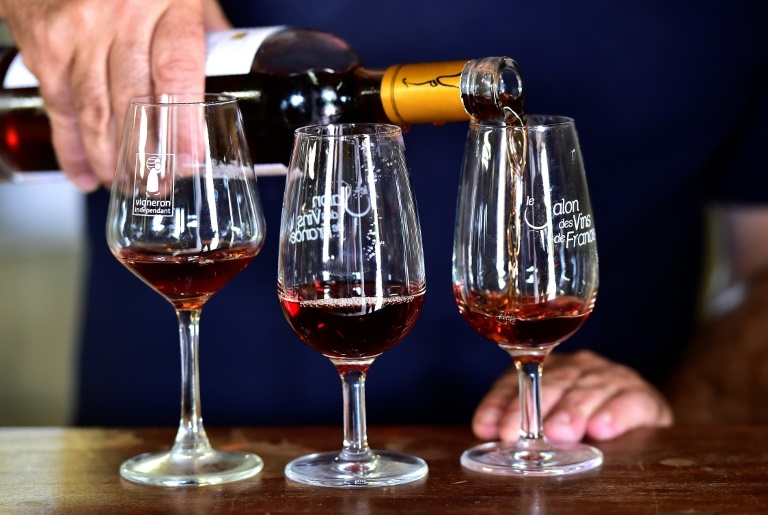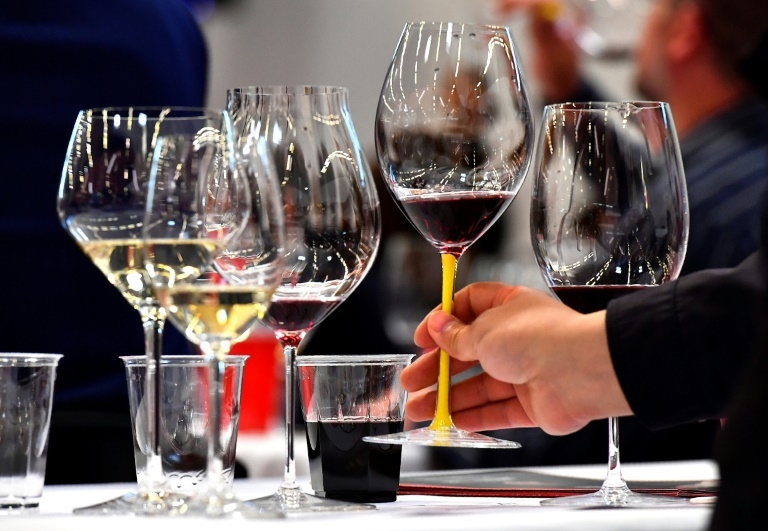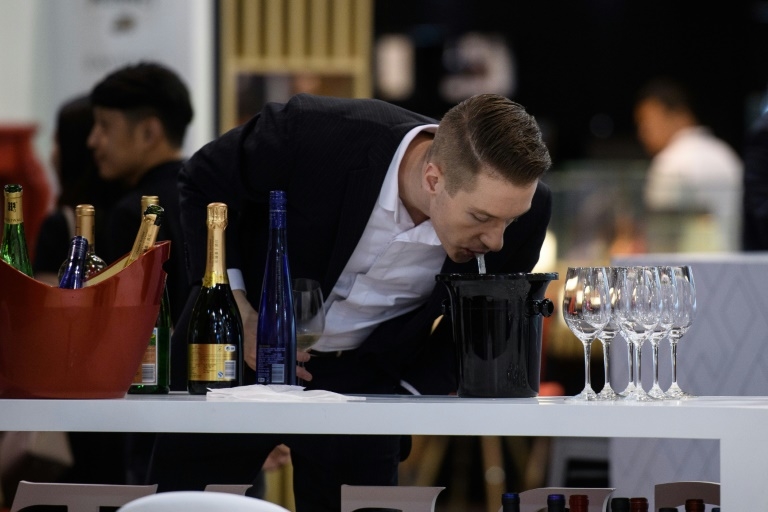Spitting is frowned upon in polite society unless of course, the spitter is engaged in tasting wines.
“It is by spitting out the wine that you will be even more distinguished in society,” said Pierre-Jules Peyrat, a Paris sommelier.

Holding forth before a rapt crowd at a wine-tasting in the French capital, Peyrat begins by sticking his expert nose into a glass of chilled rose, it is important to get a good whiff before tasting the wine.
Once in the mouth, the wine is swirled around, or chewed, for a few seconds. The taster may then make a “duck face” to allow a bit of air to detect further characteristics, a step called “grumage.”
Next, the mouthful of liquid is spewed back out in an unapologetic burst into a spittoon.
For professionals, winegrowers, oenologists, sommeliers and wine merchants, tasting wine means assessing its appearance, or robe, its interaction with air, its aromas and finally its taste, as well as its “structure” in the mouth.

The first step is to identify the wine’s basic quality, is it bitter, sweet, salty, acid or umami, that elusive taste between acid and sweet that is prized in Asia?
Does the appraisal then turn to the tactile sensation the vintage creates which is coarse, astringent or effervescent?
Spitting the wine out is intrinsic to a tasting.
“People think swallowing the wine will give you more aromas, but that is false,” said Olivier Thienot, who founded the Ecole du Vin de France in 2003.
“The aromas often come after the spitting,” said Christophe Marchais, an oenologist from western France near the city of Nantes, acknowledging that the act may seem “a bit bizarre” to the uninitiated.
Some object to the sight of good wine seemingly going to waste, others fear looking boorish or foolish or staining their clothes.
Spitting, when the wine mixes with air coming from the nose, can bring out “other prevalent aromatic notes,” Peyrat said, calling the phenomenon “retro-olfaction.”
‘Intense pleasure’
It “is a much more intense pleasure than being drunk,” Peyrat added.
For France’s some 7,000 oenologists, “spitting is an ordinary act,” said Thienot, noting that a professional taster can assess as many as 100 wines on a given day.
France, the world’s leading wine exporter in terms of value, welcomes around 10 million oenotourists each year, and their sophistication is growing.

About 12% of the students taking wine-tasting short courses at Thienot’s Paris school are foreigners.
The world of wine has a rich, often poetic vocabulary, much of it borrowed from the perfume industry, to describe myriad sensations.
A wine may evoke honeysuckle or berries, or have spicy or woody notes, or be redolent of burnt bread.
For all that, consumer groups are demanding that more down-to-earth information be included on a wine’s label.

A draft rule has been prepared by the International Wine Organization that would require labels to provide data on calories and ingredients such as sugar or cellulose gum, according to Joel Forgeau, a winemaker in Mouzillon near Nantes and president of a wine lobby.
But no label can reflect a wine’s taste, “because the wine is a creation,” Thienot said. “Its taste comes from the soil, the weather, the winemaking, the know-how and so many other things.” HM/JB
RELATED STORIES:


